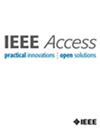StethoNet: Robust Breast Cancer Mammography Classification Framework
IF 3.6
3区 计算机科学
Q2 COMPUTER SCIENCE, INFORMATION SYSTEMS
引用次数: 0
Abstract
Despite the emergence of numerous Deep Learning (DL) models for breast cancer detection via mammograms, there is a lack of evidence about their robustness to perform well on new unseen mammograms. To fill this gap, we introduce StethoNet, a DL-based framework that consists of multiple Convolutional Neural Network (CNN) trained models for classifying benign and malignant tumors. StethoNet was trained on the Chinese Mammography Database (CMMD), and tested on unseen images from CMMD, as well as on images from two independent datasets, i.e., the Vindr-Mammo and the INbreast datasets. To mitigate domain-shift effects, we applied an effective entropy-based domain adaptation technique at the preprocessing stage. Furthermore, a Bayesian hyperparameters optimization scheme was implemented for StethoNet optimization. To ensure interpretable results that corroborate with prior clinical knowledge, attention maps generated using Gradient-weighted Class Activation Mapping (GRADCAM) were compared with Regions of Interest (ROIs) identified by radiologists. StethoNet achieved impressive Area Under the receiver operating characteristics Curve (AUC) scores: 90.7% (88.6%-92.8%), 83.9% (76.0%-91.8%), and 85.7% (82.1%-89.4%) for the CMMD, INbreast, and Vindr-Mammo datasets, respectively. These results surpass the current state of the art and highlight the robustness and generalizability of StethoNet, scaffolding the integration of DL models into breast cancer mammography screening workflows.StethoNet:强大的乳腺癌乳房 X 射线摄影分类框架
尽管出现了许多用于通过乳房X光照片检测乳腺癌的深度学习(DL)模型,但缺乏证据表明这些模型对新的未见乳房X光照片具有良好的鲁棒性。为了填补这一空白,我们引入了 StethoNet,这是一个基于深度学习的框架,由多个经过训练的卷积神经网络(CNN)模型组成,用于对良性肿瘤和恶性肿瘤进行分类。StethoNet 在中国乳腺摄影数据库(CMMD)上进行了训练,并在 CMMD 的未见图像以及两个独立数据集(即 Vindr-Mammo 和 INbreast 数据集)的图像上进行了测试。为了减轻域偏移效应,我们在预处理阶段采用了一种有效的基于熵的域适应技术。此外,我们还为 StethoNet 优化实施了贝叶斯超参数优化方案。为了确保可解释的结果与先前的临床知识相吻合,我们将使用梯度加权类激活图谱(GRADCAM)生成的注意力图谱与放射科医生确定的感兴趣区(ROI)进行了比较。StethoNet 的接收器操作特性曲线下面积 (AUC) 得分令人印象深刻:CMMD、INbreast 和 Vindr-Mammo 数据集的 AUC 分别为 90.7%(88.6%-92.8%)、83.9%(76.0%-91.8%)和 85.7%(82.1%-89.4%)。这些结果超越了目前的技术水平,凸显了 StethoNet 的稳健性和通用性,为将 DL 模型集成到乳腺癌乳腺 X 射线摄影筛查工作流程中提供了支架。
本文章由计算机程序翻译,如有差异,请以英文原文为准。
求助全文
约1分钟内获得全文
求助全文
来源期刊

IEEE Access
COMPUTER SCIENCE, INFORMATION SYSTEMSENGIN-ENGINEERING, ELECTRICAL & ELECTRONIC
CiteScore
9.80
自引率
7.70%
发文量
6673
审稿时长
6 weeks
期刊介绍:
IEEE Access® is a multidisciplinary, open access (OA), applications-oriented, all-electronic archival journal that continuously presents the results of original research or development across all of IEEE''s fields of interest.
IEEE Access will publish articles that are of high interest to readers, original, technically correct, and clearly presented. Supported by author publication charges (APC), its hallmarks are a rapid peer review and publication process with open access to all readers. Unlike IEEE''s traditional Transactions or Journals, reviews are "binary", in that reviewers will either Accept or Reject an article in the form it is submitted in order to achieve rapid turnaround. Especially encouraged are submissions on:
Multidisciplinary topics, or applications-oriented articles and negative results that do not fit within the scope of IEEE''s traditional journals.
Practical articles discussing new experiments or measurement techniques, interesting solutions to engineering.
Development of new or improved fabrication or manufacturing techniques.
Reviews or survey articles of new or evolving fields oriented to assist others in understanding the new area.
 求助内容:
求助内容: 应助结果提醒方式:
应助结果提醒方式:


